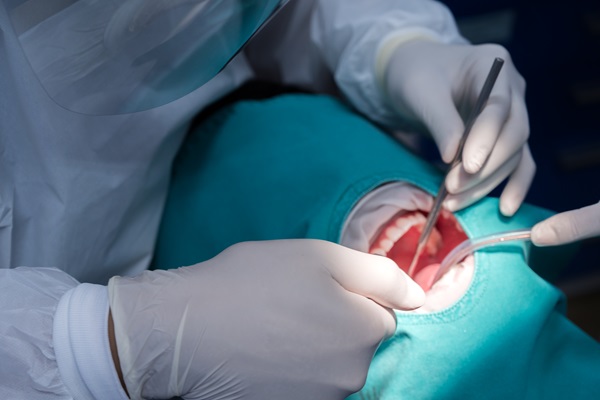Oral Surgery from a General Dentist for Dental Implant Placement

Minor oral surgery is required for the placement of dental implants. An implant is an artificial tooth root placed in the jaw to replace lost roots that fall out when a tooth is lost. The importance of this cannot be overstated as it helps to preserve bone tissue loss in the jaw.
Bone tissue loss is one of the most significant issues people with missing teeth deal with. It alters their facial structures and creates a sunken look. It also leads to wrinkles forming around the mouth. All that can be avoided by replacing lost teeth roots with implants and attaching restorations like crowns, bridges, or dentures to the implants.
How a general dentist places dental implants with oral surgery
Some general dentists get the additional training needed to perform minor oral surgery like the installation of implants. Getting missing teeth replaced with implants often starts with the dentist evaluating the patient to determine if they are healthy enough for minor surgery. Health conditions like diabetes or immune system disorders hinder the body’s ability to recover. Some medications can also slow down the healing process.
The dentist will talk to the patient about their medical and dental history and go over any medications they are taking. The dentist will also talk to the patient about habits like drinking and smoking. These habits also slow down the healing process, increasing the risk of complications.
Patients also need to have adequate bone tissues in the jawbone to hold implants. Those who lack the jaw thickness needed to hold implants in place might have to get bone grafts. Bone grafting can be safely used to widen a person’s jaw, but they need to be fully healed before starting with implants. It takes about three months to recover from the procedure.
The surgical placement of the implant
The surgical placement of dental implants starts with the dentist administering a shot of a local anesthetic. This prevents the patient from feeling pain as the dentist incisions into their gums to access their jaw.
A small hole is drilled into the jaw, and the implant is shoved into it. Surrounding bone tissues hold the implant in place via friction. The implant bonds with these bone tissues over about six months until it becomes part of the patient’s jaw. The procedure is called osseointegration.
Once the implant has fused with bone tissues in the jaw, a restoration can be placed on it to complete the treatment. The implant helps preserve bone tissue in the jaw by transferring bite forces into it, giving the tissues there the stimulation they need to remain healthy. Implants are the next best thing to natural teeth. They can last the rest of the patient’s life, and they do not require any special care.
Explore dental implants
Need to replace a missing tooth? Call or visit our Sacramento clinic to learn more about implants and other teeth replacement options.
Request an appointment here: https://www.landparkdental.com or call Land Park Dental at (916) 800-6242 for an appointment in our Sacramento office.
Check out what others are saying about our dental services on Yelp: Oral Surgery in Sacramento, CA.
Related Posts
Implant restoration is a transformative dental procedure that restores function, aesthetics, and confidence by replacing missing teeth with durable, natural-looking implants. While the results are long-lasting, understanding the recovery process and proper aftercare is essential to ensure the success of the implant restoration and maintain optimal oral health.After the placement of an implant restoration, patients…
Periodontal gum disease treatment helps prevent the progression of gum disease, which protects your oral and overall health. Periodontal disease, commonly referred to as gum disease, affects the tissues supporting the teeth, potentially leading to tooth loss if left untreated. periodontist's early diagnosis and treatment of this condition can significantly improve your long-term gum health.The…
All-on-4® implants are an ever-growing trend due to their permanence and ease. Many people struggle with temporary tooth solutions such as dentures, as they can slide around and need frequent resizing. All-on-4 implants are completed by inserting posts into the jawbone and replacing all teeth. Before attempting to get surgery for the implants, there are…
Laser dentistry is changing the way some dentists perform common dental procedures. This advanced dental technology utilizes special dental lasers instead of more traditional dental instruments. In addition to crown lengthening and gum disease treatment, dental lasers can also be tools for root canal procedures.A root canal is necessary when a dental patient experiences an…
